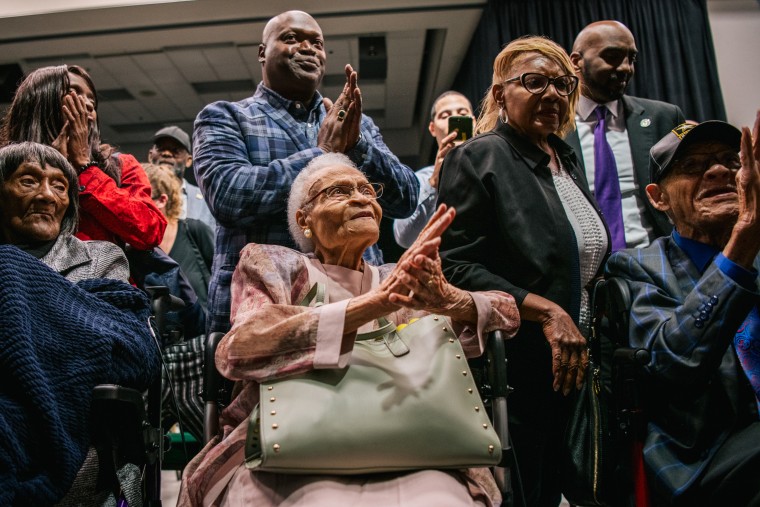A lawsuit seeking reparations and rebuilding to address historical damage done by the 1921 Tulsa Race Massacre has been dismissed.
The case, filed on behalf of the last three survivors of the assault by a white mob that killed an estimated 300 Black Americans in a community often called "the Black Wall Street" of its day, was dismissed by an Oklahoma judge Friday, according to its record.
Judge Caroline Wall said in her decision that she agreed with defendants, parties that include the state and the city of Tulsa, who moved multiple times to dismiss. Wall dismissed the suit with prejudice, meaning it cannot be refiled in state court.
The plaintiffs, Lessie Benningfield Randle, Viola Fletcher, and Hughes Van Ellis, may still appeal.
Lawyers for them, and for the defendants, as well as a nonprofit associated with the case, did not immediately respond for comment.
Philanthropist Ed Mitzen who, along with wife, Lisa, gave the trio $1 million last year, expressed disappointment in the dismissal, calling it an "incredibly sad development."
"Our hearts are with the survivors and their families," Mitzen said by email.
Among the defendants' arguments is that the three plaintiffs did not suffer individual, adverse affects from the massacre, which has emerged as an example of government-sanctioned racism and violence that has contributed to uneven outcomes for Black Americans.
The massacre most likely started as a misunderstanding, or a lie. A Black boy got into an elevator with a white girl in Tulsa, and after they emerged the local newspaper suggested he had tried to sexually assault her, an allegation never endorsed by the girl.
Historians have speculated that the boy may have tripped and bumped into the girl, given the constricting norms and heavy price for liaisons beyond the confines of race at the time.
The newspaper's editorial page called for a lynching, and the next day town whites were on the march and rioting, burning down 1,200 homes, 60 business, a hospital, a school, and a library in the Greenwood District, according to Human Rights Watch.
The rioting gutted the heart of the Black community, which would never recover to the lofty days before May 31, 1921.
The lawsuit called it one of the nation's "worst acts of domestic terrorism." It argued that plaintiffs like Lessie E. Benningfield Randle, at 108 the oldest survivor of the event, suffered personal losses.
In Randle's case, her grandmother's home was looted and destroyed. One of the keys to the discrepancy between white and Black wealth has been intergenerational real estate ownership, with many cases of property destroyed or outright stolen following the Civil War.
In the case of Tulsa, lawyers argued in the civil filing, "This brutal, inhumane attack ... robbed thousands of African Americans of their right of self-determination on which they had built this self-sustaining community."
The plaintiffs have argued the city, county and state created a public nuisance, or at least stood by when it happened, and then used it to enrich their respective governments. The suit cites apologies by the city's mayor and by a commander of the Oklahoma National Guard, the latter of whom admitted troops did nothing to save the community.
The defendants maintain that there's no proof the three plaintiffs suffered "individualized injury." "Tragically, many people lost their businesses, their homes, and their very lives in the massacre," they said in a filing in December.
The plaintiffs did not attach a dollar amount to the suit. They have said they want the defendants to rebuild some community elements, such as a hospital, and contribute to a survivors' fund.
Dismissal is unlikely to pause the widening awareness of their story, a crucial piece of American history that helps explain contemporary disparities.
Mitzen said he appreciated plaintiffs' role in the narrative.
“We wanted to meet them, shake their hands, tell them we were sorry for what happened, and let them know their struggle mattered,” he said. “And when it was time for them to leave this earth, we wanted them to know their families would be a little better off today than yesterday.”

